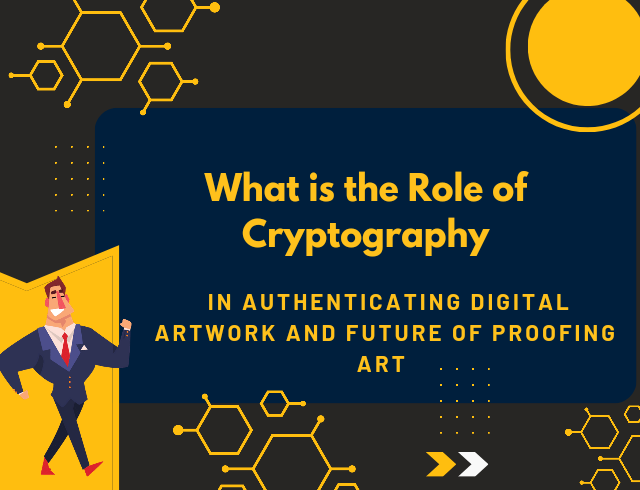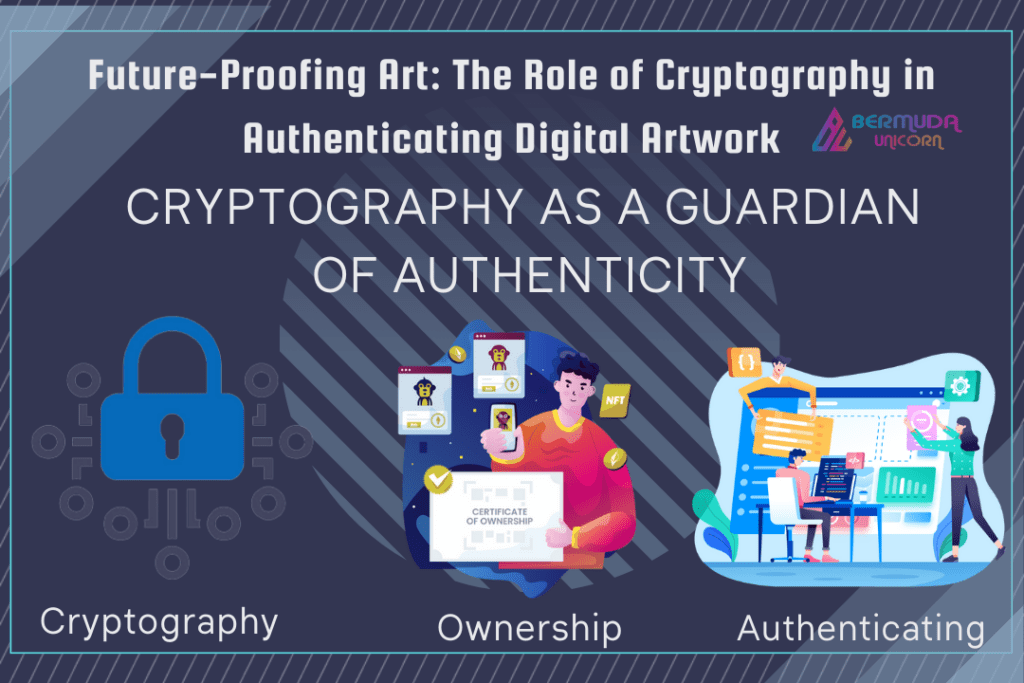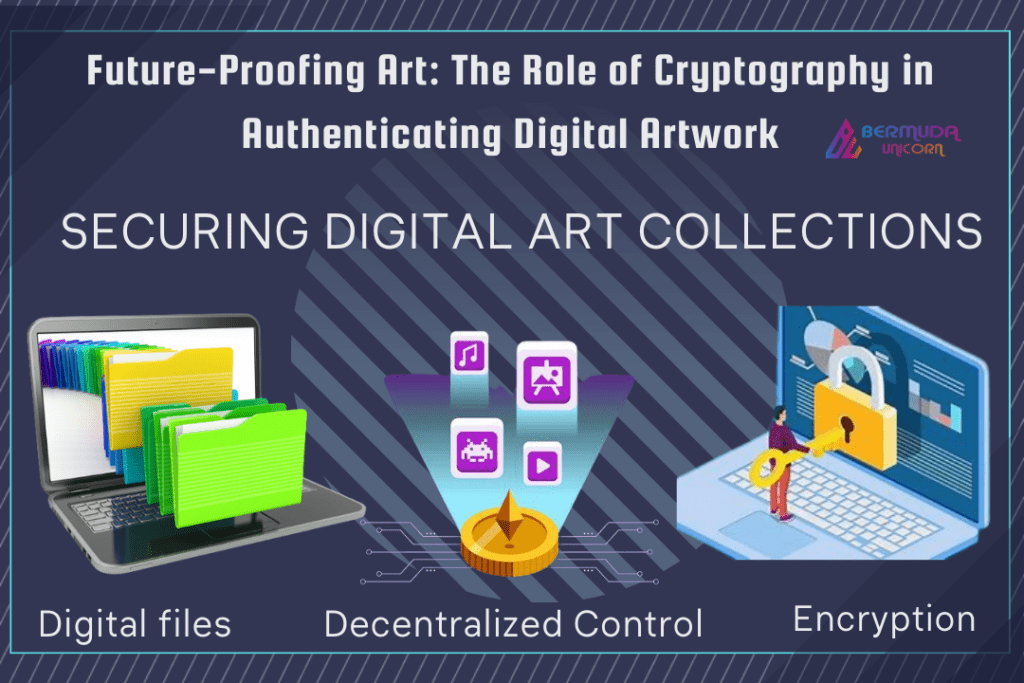

Introduction
In an era where the digital landscape is rapidly transforming the art world. The challenges of authenticating digital artwork have become more pronounced than ever. Also, with the rise of NFTs (Non-Fungible Tokens) and blockchain technology. Artists and collectors are exploring new avenues to ensure the integrity and provenance of digital creations. One key player in this evolution is cryptography—a powerful tool that holds the potential to future-proof art in the digital realm.
The Challenge of Authenticating Digital Art
The shift from traditional art forms to digital formats has given rise to a set of unique challenges for the art industry. Unlike physical artworks, digital pieces can be easily copied and disseminated without any inherent limitations. This ease of duplication raises questions about the authenticity and ownership of digital art, creating a pressing need for innovative solutions.
Cryptography as a Guardian of Authenticity
Cryptography, the science of securing communication and information, has emerged as a formidable ally in addressing the challenges of authenticating digital art. By leveraging cryptographic techniques, artists and platforms are introducing layers of security that not only protect the integrity of the artwork but also establish verifiable ownership.

NFTs and Blockchain Technology
At the forefront of the intersection between cryptography and digital art is the concept of Non-Fungible Tokens (NFTs). NFTs are unique, indivisible tokens that represent ownership of a specific digital asset, such as a piece of art. These tokens are stored on a blockchain—a decentralized and tamper-resistant ledger that records transactions in a transparent and secure manner.
Cryptography plays a pivotal role in the creation and management of NFTs. Each token is cryptographically linked to a specific digital file, creating a unique identifier that cannot be replicated. This linkage ensures that the ownership and authenticity of the digital artwork . Also, securely recorded on the blockchain, providing a transparent and unforgeable record.
Smart Contracts for Artistic Control
In addition to NFTs, smart contracts, self-executing contracts with the terms of the agreement directly written into code, play a crucial role in the marriage of cryptography and digital art. Artists can embed conditions and royalties directly into the smart contract, ensuring they receive a percentage of sales each time the artwork changes hands. This empowers artists with greater control over their creations and ensures a more sustainable and equitable ecosystem.
Securing Digital Art Collections
As digital art collections grow, the need for robust security measures becomes increasingly vital. Cryptography provides the means to implement secure storage solutions and authentication mechanisms for digital art platforms. Encryption techniques can safeguard the storage of digital files, preventing unauthorized access and modification.

Challenges and Considerations
While cryptography offers significant advantages in future-proofing digital art, but it has challenges. Issues such as energy consumption in blockchain networks, scalability, and the environmental impact of certain cryptographic methods require careful consideration. Striking a balance between security, efficiency, and sustainability is essential for the widespread adoption of cryptographic solutions in the art world.
Conclusion
As the art world continues its digital evolution, the role of cryptography in authenticating digital artwork becomes increasingly vital. Through the use of NFTs, blockchain technology, and smart contracts, cryptography offers a promising avenue for securing the provenance and ownership of digital art. While challenges persist, the potential benefits of future-proofing art through cryptographic means are vast, promising a more transparent, secure, and equitable future for digital creators and collectors alike.
Frequently Asked Questions (FAQs)
1. What is the role of cryptography in authenticating digital artwork?
Cryptography plays a crucial role in authenticating digital artwork by providing secure and transparent solutions. Through the use of Non-Fungible Tokens (NFTs) and blockchain technology, cryptographic techniques ensure the uniqueness of digital assets, establishing verifiable ownership and protecting against unauthorized duplication.
2. How do NFTs contribute to the authentication of digital art?
NFTs, or Non-Fungible Tokens, serve as unique identifiers for digital assets on a blockchain. Each token is cryptographically linked to a specific digital file, creating an unforgeable connection between the token and the artwork. This linkage not only ensures the authenticity of the digital art but also provides a transparent and decentralized ledger of ownership.
3. What are smart contracts, and how do they benefit artists in the digital art ecosystem?
Smart contracts are contracts that execute themselves based on predefined terms written in code.. In the context of digital art, artists can embed conditions, royalties, and permissions directly into the smart contract. This empowers artists with greater control over their creations, ensuring they receive a percentage of sales each time the artwork changes hands. Smart contracts enhance transparency, automate processes, and contribute to a more equitable distribution of value.
4. Are there environmental concerns associated with the use of cryptography in digital art authentication?
Yes, environmental concerns are a consideration, especially in the context of blockchain networks that rely on energy-intensive consensus mechanisms like Proof of Work. The environmental impact of certain cryptographic methods used in blockchain technology is a subject of ongoing discussion. However, there are alternative consensus mechanisms and efforts to transition towards more sustainable practices within the blockchain space.
5. How can cryptography help secure digital art collections?
Cryptography provides essential tools for securing digital art collections. Encryption techniques can be employed to protect the storage of digital files, prevent unauthorized access, and ensure the confidentiality and integrity of the artworks. By implementing cryptographic measures, digital art platforms can enhance the overall security of their collections, safeguarding against potential threats and unauthorized alterations.